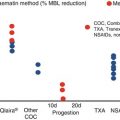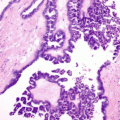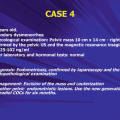Fig. 17.1
The Stages of Reproductive Aging Workshop (STRAW) +10 staging system (Adapted from Harlow et al. [1])
17.2 Impact of the Menopause Transition on a Woman’s Life
Menopausal transition is a physiological event in every woman’s life; nevertheless, it can profoundly affect quality of life. In fact during this period, women complain about new and unexpected annoying symptoms and their bodies are at the mercy of intense hormonal and physical changes. The clinical signs associated with this period are vasomotor symptoms, sleep disruption, mood alteration, urogenital complaints, and sexual dysfunction. Among these, the most frequent are vasomotor symptoms, which afflict 75 % of women and usually disappear within 1–5 years.
Moreover, the years around the menopause are associated with weight gain, increased central adiposity and waist circumference. The annual rate of weight gain, estimated to be about 0.5 kg, is independent of menopausal status, while it is consistently related to chronological aging [2]. In contrast, adverse changes in either body fat distribution, from a more gynoid pattern to a more android pattern, or body composition with increased fat mass and decreased lean mass may be due to hormonal changes occurring during the menopausal transition [3]. The deleterious change in body fat distribution consists of an increase in abdominal adiposity owing to the selective accumulation of fat in the intra-abdominal compartment [4], independent of age and total body fat mass [5]. Specifically, increased abdominal adiposity is known to increase the risk of developing CVD.
Data from the Women’s Healthy Lifestyle Project provide clear evidence that weight gain and increased waist circumference, along with elevations in lipid levels and other risk factors for coronary heart disease (CHD), are preventable through use of lifestyle intervention in healthy menopausal women. In fact, although these changes are inevitable with age and menopause, physical activity may attenuate the impact of both events. Thus, weight gain prevention should be recognized as an important health goal for women before they approach menopause and women should do regular physical activity [6].
As hormonal changes during the MT directly or indirectly adversely affect quality of life, body composition, and risk of cardiovascular disease (CVD), the maintenance of health parameters in the premenopausal years is crucial for a healthy postmenopausal life.
17.3 Estrogens and Cardiovascular Risk
Estrogens and the other sex hormones regulate some of the fundamental cardiovascular functions including blood pressure, blood flow, vasodilatation and vasoconstriction, vascular inflammation and remodeling, and atherosclerosis [7]. The actions of endogenous estrogens on the cardiovascular system can be mediated directly on the vessels or indirectly through the modulation of cardiovascular risk factors.
Estrogen exerts pleiotropic functions on the cardiovascular system through both genomic and nongenomic effects [8, 9]. Traditionally, estrogen receptors (ERs) act as transcription factors regulating the expression of target genes by directly binding to specific DNA sequences, the estrogen response element (ERE). Nongenomic effects are rapid responses that occur too quickly to be mediated by gene transcription, instead involving modulation of membrane and cytoplasmic proteins.
At this level, estrogen triggers rapid vasodilatation, exerts anti-inflammatory effects, regulates vascular cell growth and migration, leading to a protective action on vessels [10]. These rapid and nongenomic effects are reached by complex interactions with membrane-associated signaling ERs, leading to the activation of downstream cascades such as mitogen-activated protein kinase (MAPK) and phosphatidylinositol 3-OH kinase (PI3K). These cascades are responsible for the important cardiovascular actions of estrogen, for instance, the activation of nitric oxide (NO) synthesis or the remodeling of the endothelial actin cytoskeleton. Moreover, these cascades play crucial roles in regulating the expression of target proteins implicated in cell proliferation, apoptosis, differentiation, movement, and homeostasis [11].
Furthermore, estrogens also have systemic effects that may have an influence on cardiovascular risk, altering the serum lipid concentrations, the coagulation and fibrinolytic systems, and the antioxidant system [7]. In fact, through ER estrogens regulate hepatic expression of apoprotein genes and several coagulation and fibrinolytic proteins. The net effect of these changes is to improve the lipid profile and to promote vasodilatation and antioxidant activities. By contrast, the menopause leads to an overturning of all these effects, increasing the cardiovascular risk.
Recent advancements in the characterization of the molecular basis of the actions of estrogen help us to understand its biological functions and would be beneficial in elucidating current controversies on its clinical efficacy in the cardiovascular system.
17.4 The Menopausal Transition and Cardiovascular Risk
Cardiovascular diseases are the number one cause of death globally, both for men and women. It is well documented that morbidity and mortality rates from CVD are higher in men than in women; however, this gender gap narrows after the menopause, suggesting that female sex hormones and aging might play a role [12]. In fact, the incidence of CVD in women increases substantially with aging, probably because the menopause diminishes the gender protection contributing to an adverse impact on cardiovascular risk variables [7]. Nevertheless, whether this higher cardiovascular risk is a function of aging or a consequence of the loss of endogenous estrogen due to the menopause, or both, has been debated in the literature for many years [13, 14].
In this respect, it is worth mentioning the results of the Study of Women’s Health Across the Nation (SWAN). SWAN is a multicenter, multi-ethnic longitudinal study designed to characterize the physiological and psychosocial changes that occur during the menopausal transition and to observe their effects on subsequent health and risk factors for age-related diseases. A total of 3,302 women were enrolled at seven clinical sites between 1996 and 1997. At the time of enrollment, women were premenopausal, not taking hormones and between 42 and 52 years of age. Participants self-identified as African–American (28 %), Caucasian (47 %), Chinese (8 %), Hispanic (8 %), or Japanese (9 %). SWAN has a multidisciplinary focus and thus has repeated measures of bone health, cardiovascular risk factors, psychosocial factors, and ovarian hormones [15].
In this setting, Matthews et al. [16] evaluated the change in CHD risk factors in relation to a very particular and critical period of a woman’s life, the FMP. Women who experienced a natural menopause (1,054 out of the total) were analyzed independent of age and other confounders. The results showed significant increases in total cholesterol, LDL-C, and Apo B within a year of the FMP; importantly, the rate of change relative to the FMP did not vary by ethnicity, suggesting that the menopause might have a uniform influence on lipids. The other risk factors changed in a linear pattern consistent with chronological aging: triglycerides, lipoprotein (a), insulin, factor VIIc, and systolic blood pressure increased; diastolic blood pressure, tissue plasminogen activator antigen, fibrinogen, and high-sensitivity C-reactive protein did not change.
In conclusion, the year immediately around the FMP has been identified as the critical time period of changes in the lipid profile leading to an increased risk of CVD in the post-menopausal years. Although a significant portion of this increased risk is likely due to changes in plasma lipid–lipoprotein levels secondary to estrogen deficiency, a number of other hormonal and physiological changes that occur during the menopause transition may also contribute. Therefore, during the menopausal transition several adverse changes take place and modify cardiovascular risk factors. It may thus be necessary to encourage lifestyle measures and therapeutic interventions such as hormone replacement therapy throughout the menopausal transition to counteract or prevent these events.
17.5 Hormone Therapy: A Debate Still Open
Hormone replacement therapy (HRT) for postmenopausal women has been available for more than 60 years. Since that moment, HRT has been the subject of discussion and debate. In the early 1990s, the effects of HRT were thought to be beneficial because of a reduction of 30–50 % in the risk of CVD and osteoporosis. These effects were confirmed by a large number of observational studies [17, 18]; thus, in 1992 the American College of Physicians published guidelines strongly advising a preventative use of HRT [19]. In those years an escalation in the use of HRT was registered across the world [20].
However, in the late 1990s, a number of studies started questioning the protective role and the safety of HRT. Randomized clinical trials (RCTs) overturned the previous hypothesis about the advantage of HRT, showing no evidence of cardiovascular benefit, but instead a negative effect on women’s health. Among these, the Women’s Health Initiative (WHI) trial had a great impact. Over 16,000 menopausal women between the ages of 50and 79 (mean age 63 years) were enrolled across 40 clinical centers in the USA. After a mean of 5.2 years of follow-up the study was stopped because of an increased risk for cancer and adverse effects on the cardiovascular system [21, 22]. The consequent release in 2002 of the principal findings from the WHI was associated with a substantial decline in use by postmenopausal women [23].
Nevertheless, more recent subgroup analyses suggested that the lack of benefit or increase in CVR observed in the WHI might result from the harmful effect of HRT in older women well after the menopause. It is clear that the characteristics of women selected for RCTs were markedly different than those of women studied from the general population in observational studies from which the estrogen cardioprotective hypothesis was generated. Therefore, these secondary analyses pointed out that the benefit of HRT may be dependent upon both the age of the women at the time of HRT initiation and the timing of the initiation of hormone exposure. Not only the role of timing, but also the role of the type, dose, and route of HRT should be analyzed. These hypotheses have encouraged two new RCTs: the Kronos Early Estrogen Prevention Study (KEEPS) and the Early vs Late Intervention Trial with Estradiol (ELITE). KEEPS is a randomized clinical and controlled study with the objective of clarifying the controversy about the effects of HRT on the progression of the atherosclerosis risk–benefit factor with the use of estrogens in postmenopausal women. Healthy women aged 42–58 years who are within 36 months of their last menstrual period have been recruited to receive either oral estrogens or estradiol patches; in addition, both groups are given oral micronized progesterone for 11 days of each month. Outcomes will be carotid–intima media thickness and the accrual of coronary calcium. Preliminary reports on this study have been distributed, but a full publication is still awaited. On the other hand, ELITE randomized women based on the number of years since menopause (less than 6 years or more) to receive either estradiol or placebo. As in KEEPS, the primary endpoint is the change in carotid intima-media thickness. The results from these studies will help us to clarify some of the aspects that are still unsolved.
The most recent Position Statement of the North American Menopause Society on hormone therapy published in early 2012 clarifies the existing data and provides easy-to-follow recommendations for menopause management [24]. HRT should be given to healthy and chronologically young perimenopausal women within 10 years of the onset of menopause in the lower dose regimens [25]. Based on the available evidence, those women with these characteristics who carry on the use of HRT for several years experience a significant decrease in their risk of developing a heart attack.
Stay updated, free articles. Join our Telegram channel

Full access? Get Clinical Tree







